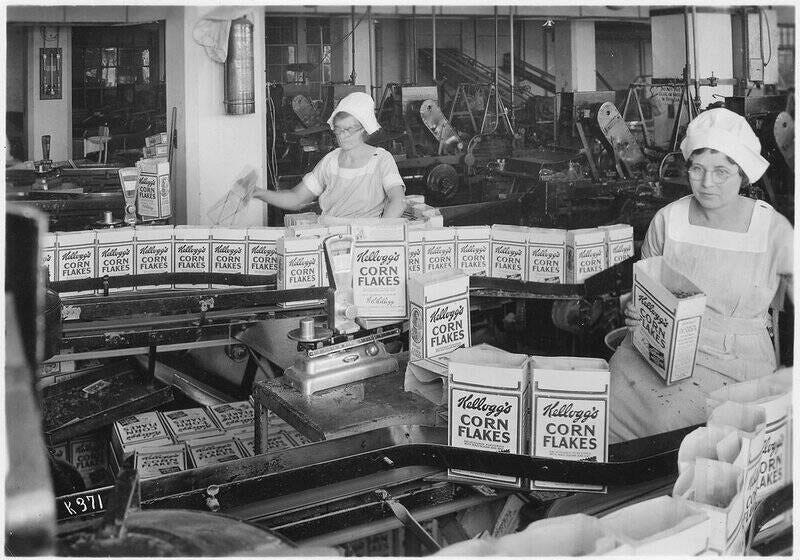The Unusual Journey of Dr. Kellogg: Corn Flakes and Controversy
Written on
Chapter 1: A Pioneer in Hygiene
The name John Harvey Kellogg is often associated with the American Hygiene Movement, as he dedicated his intellect to various health initiatives. Advocating for a comprehensive view of wellness, Kellogg, along with his brother, created cereal, thus paving the way for what became a staple of the American breakfast and a significant figure in 20th-century hygiene.
His commitment to nutrition was accompanied by fervent anti-masturbation campaigns, which included shocking recommendations for the mutilation of children’s genitals. To understand the connection between his extreme beliefs and his cereal invention, we must explore the influences that shaped John Harvey Kellogg.
Section 1.1: The Influences that Shaped Kellogg
Born on February 26, 1853, in Tyrone, Michigan, Kellogg grew up amid America's hygiene revolution, a period marked by the introduction of innovations like the flushing toilet. However, this was also a time when societal campaigns against sex and alcohol were gaining momentum. Witnessing both the push for wellness and the struggles of society profoundly impacted Kellogg's mindset, intertwining ideas of abstinence with extreme hygiene, which ultimately influenced his theories.
Subsection 1.1.1: Kellogg's Ideological Foundation
From the onset of his medical studies in 1875, Kellogg became entrenched in the concept of “Biologic living.” His education instilled in him a profound respect for the human body, which he regarded as a “living temple.” This reverence led him to adopt a holistic lifestyle characterized by strict vegetarianism, temperance, and sexual abstinence. Any deviation from these principles, he deemed as “self-pollution.” Kellogg devoted himself to promoting cleanliness and urged others to adopt unconventional methods to achieve it.
Section 1.2: A New Breakfast Revolution
Kellogg's life took a pivotal turn when he directed his focus toward transforming America's breakfast habits. His peculiar belief that cereal could suppress sexual urges became his guiding principle.
In the 1880s, the typical American breakfast was dominated by meat, whether cold, salted, or fried. While non-meat alternatives existed, their preparation was labor-intensive and time-consuming, deterring many from opting for grains. Kellogg advocated for greater consumption of yogurt, grains, and nuts, while working with his brother to create a low-preparation cereal option. Their initial attempt resulted in crumbled graham biscuits, termed “granola.” However, through perseverance, they succeeded in producing flaked wheat cereal by 1902, which they named corn flakes.
Chapter 2: The Aftermath of Corn Flakes
Kellogg's interest in the enterprise waned, leading his brother William to acquire the corn flakes business and establish the Battle Creek Toasted Corn Flake Company in 1906. However, family tensions erupted when John Harvey sued William for using the family name. Ironically, William counter-sued and triumphed. In the aftermath, Kellogg insisted that his motivations were never financial; instead, he aimed for reform.
His reformative efforts revolved around combating one of society's most pernicious vices—masturbation—through the promotion of a wholesome diet designed to diminish carnal urges.

Section 2.1: Kellogg's Disturbing Beliefs
Kellogg harbored a lifelong aversion to sex; he never consummated his marriage to Ella Ervilla Eaton, despite raising 42 children together. His extreme views included suggestions for parents to physically restrain their children and radical surgical interventions for boys to prevent erections. For girls, he controversially proposed the application of carbolic acid on their clitorises.
Interestingly, he believed that a healthier diet, exemplified by corn flakes, would aid in controlling children's sexual impulses—a less violent approach compared to his other suggestions.
Section 2.2: Contributions to Health and Wellness
Despite his bizarre beliefs, Kellogg made significant contributions to health, notably by transforming the Battle Creek Sanitarium into a wellness hub after its renovation in 1877. Under his guidance, the facility grew from treating 300 patients annually to 1200 within a decade.
His unconventional methods included multiple daily enemas—he personally received two each day, one at breakfast and another at lunch. Kellogg promoted the consumption of yogurt, advising his patients to ingest it both orally and rectally. He even patented a device designed to shake patients violently, facilitating bowel movements. Furthermore, he supported controversial practices such as forced sterilization for criminals and organized breeding contests for infants based on racial criteria.
Kellogg emerged as a health guru for many Americans, even treating notable figures like Henry Ford and Thomas Edison.
Chapter 3: A Legacy of Contradictions
While Kellogg undoubtedly contributed to health and wellness, his legacy is multifaceted and complicated. His unconventional treatments may have had some merit, as evidenced by his longevity—he lived to the age of 91. Ultimately, Kellogg's legacy is a blend of genuine health advocacy and troubling ideologies surrounding sexuality.
More from the author:
The Queen’s Most Embarrassing Royal Cousin
8 reasons why royals are fed up with Princess Michael of Kent.
Blind Mystic’s Chilling Prediction of the Date “World Will End”
85% of Baba Vanga’s predictions were accurate.
She Was Stranded Alone on an Island for 18 Years
Tragic isolated life of Juana inspired ‘Island Of The Blue Dolphins’.